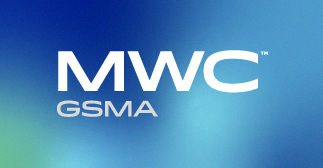

SHANGHAI, March 1, 2021 /PRNewswire/ -- During Mobile World Congress Shanghai 2021, the Global System for Mobile Communications Association (GSMA) successfully hosted the 5G Advanced Summit. The summit brought together global carriers, leaders from vertical industries, leading academic figures, and equipment and device vendors to share their insights into the driving forces behind and technical directions for 5G evolution. At the summit, participants called on all parties to jointly define 5G evolution for building a sustainable future.
Alex Sinclair, CTO of GSMA, said in his speech: "The world has witnessed inspiring commercial rollout of 5G in the past two years. By 2030, 5G will have evolved into the most dominant mobile technology that will create huge value to society."
Wu Hequan, an Academician of Chinese Academy of Engineering, shared a similar view. "One year into commercial deployment worldwide, 5G has outperformed its predecessors 3G and 4G in commercial scale and progress. To keep up with the development of network deployment and user scales, 5G must continue to innovate in application ecosystem and technological standardization so as to stimulate new services."
Business Demand Is the Main Driving Force Behind Continuous 5G Evolution
Optimizing experience is a continuous pursuit for consumer businesses. The growing popularity of 2K and 4K video, augmented reality (AR), and virtual reality (VR) services is driving a significant increase in data of usage (DOU), which is projected to exceed 100 GB by 2025. This shows how critical it is to further expand the capacity of mobile networks. With the rise of XR Pro and other innovative applications, mobile networks will also be required to guarantee Gbps experience while noticeably reducing transmission latency, which is crucial for providing an immersive experience in virtual worlds.
5G must be further integrated with vertical industries to build an engine to drive digitalization across vertical industries. A guest shared the experience of applying 5G in the automobile manufacturing industry: "5G has played an essential role in our factory. It has been widely implemented for visual recognition and smart data collection to greatly improve productivity. We believe that, with continuous evolution, 5G will provide high uplink bandwidth and high-precision positioning to better support digital transformation across industries."
Dr. Tong Wen, Huawei Fellow and CTO of Huawei Wireless, shared his insight into the major driving forces behind continuous 5G evolution. The increasingly higher requirements on consumer service experiences and constantly diversifying IoT applications require 5G networks to further improve capabilities. Additionally, the introduction of uplink centric broadband communication, real-time broadband communication, and harmonized communication and sensing will open up tremendous new business opportunities. The continuous evolution of 5G will also be important to maximize the business value of the IoT industry worth US$100 billion.
Industrial Collaboration to Draw the Blueprint of 5G Evolution
Looking back, the success of the global wireless communications industry is mainly attributed to the unified standardization and collaboration across industry chains. In the coming 10 years, 5G evolution will open up infinite possibilities. At the summit, participants called on all industrial partners to define 5G evolution under the 3GPP framework so as to accelerate the maturity of technology.
Ms. Huang Yuhong, Deputy General Manager of China Mobile Research Institute, shared 5G Wireless Evolution White Paper China Mobile released in collaboration with industrial partners. This white paper delves into the driving forces behind and technical directions for 5G evolution based on the technological principle of building intelligent and simplified 5G networks. "We believe that 5G RAN will continue to evolve in four technical directions: intelligent and efficient mobile networks to improve 5G efficiency; enhanced eMBB, mMTC, and URLLC capabilities to improve 5G performance; reconstructed use patterns of sub-100 GHz spectrum to maximize spectral efficiency; and new technologies to enable industrial applications, such as sensing communication, high-precision positioning, and other new capabilities to open up a new space for business," said Ms. Huang. Mr. Kalvin Peng, Head of R&D, Ericsson North East Asia, and Mr. Li Yan, Senior Director of Technical Standards at Qualcomm Technologies, also shared their thoughts in this regard by referring to the white paper.
The panel discussion chaired by Mr. Huang Haifeng, a well-known Chinese science and technology commentator and we-media content creator, culminated the 5G Advanced Summit. Ms. Chen Yurong, Deputy General Manager of China Mobile Shanghai Institute of Research and Development; Mr. Zhu Jinkang, professor of University of Science and Technology of China; Mr. Andy Guo, Executive Director of Frost & Sullivan, Greater China; and Mr. Jason Dai, President of Huawei Cloud Core Network Strategy & Business Development Dept. joined the panel to discuss the driving forces behind and technical directions for 5G evolution. They also called for greater collaboration across industries and more showcase projects while jointly creating new value of industrial development for all parties involved.
Each new generation of mobile technology dominates for a decade, continuously evolving to strengthen its capabilities, before being superseded by the next generation. The coming 10 years will belong to 5G. All partners should work together to develop an industrial consensus and define how to evolve 5G to ensure a sustainable future.
SOURCE GSMA
